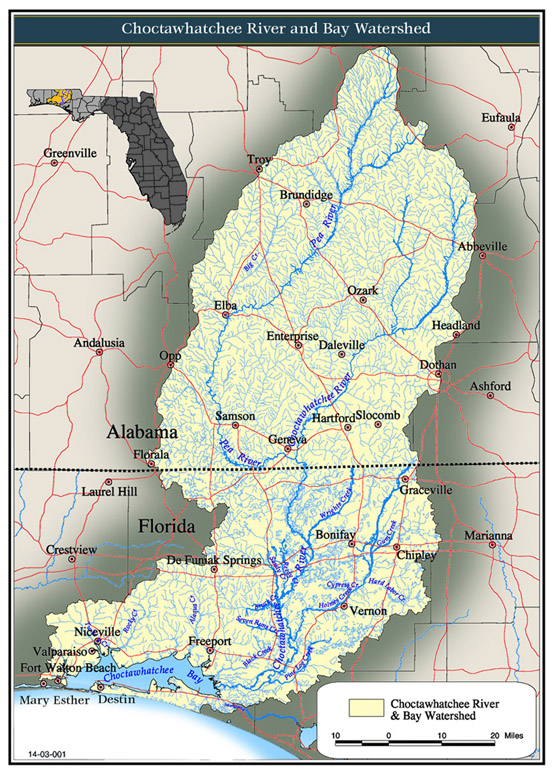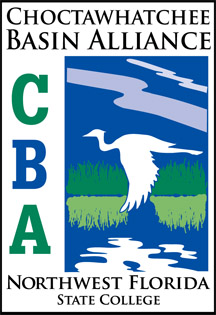
A look into the four core facets of CBA
This is the first of a four part series on the Choctawhatchee Basin Alliance of Northwest Florida State College (CBA).
It is easy to understand why most of us enjoy living in Northwest Florida. The beautiful beaches, creeks, rivers and the Choctawhatchee Bay offer extraordinary opportunities to fish, explore, swim and enjoy living in the diverse ecosystems that surround us.
Have you ever wondered who watches over the health of our beautiful waterways? It’s the Choctawhatchee Basin Alliance, of Northwest Florida State College. This diverse organization has many facets that help restore, educate, monitor and research a large geographic area called Choctawhatchee basin watershed. The watershed itself stretches from the headwaters of the Pea River in Alabama, south to the Choctawhatchee River to the Gulf of Mexico, and includes the tributaries and coastal dune lakes.
CBA is committed to sustaining and providing optimum utilization of the Choctawhatchee Basin watershed, providing opportunities for citizens, educators, and technical experts to promote the health of Choctawhatchee watershed.
 Brief history:
Brief history:
In early 1996, representatives from the Florida Department of Environmental Protection (FDEP); other state, federal and local government agencies; environmental organizations; and members of the business community met with concerned citizens and elected officials at Northwest Florida State College to discuss environmental quality and economic development. The sharing of concerns from participants along with the discussion on philosophies of ecosystem management from the FDEP and Eglin AFB sparked a partnership for sustainable development that is now called the CBA.
The health of our water resources is the foundation for their identity and our economic security. Be it fishing, tourism, or our quality of life, everything depends upon a healthy watershed. As environmental and anthropogenic threats continue to impact these critical natural areas, local citizens need to become active stewards of these precious resources to ensure that future generations can enjoy them.
The CBA engages in four core programs: education, monitoring, research, and restoration. Today we will take a peek at one of the research projects CBA is currently working on.

CBA coordinates and assists with scientific research projects to collect information to better understand the natural resources within the Choctawhatchee Basin. During the week of July 15, 2013 Choctawhatchee Basin Alliance (CBA) and the South Walton Center (SWC) are hosting a joint project between Mississippi State University (MSU) and the U.S. Environmental Protection Agency (US-EPA). The researchers are collecting sediment, pore water, and surface water samples from several sites in Choctawhatchee Bay, then analyzing the samples at their temporary lab headquartered at SWC. The scientists are evaluating several different collection, measurement and analysis methods for determining Sediment Oxygen Demand (SOD) and Nutrient Exchange (NutX) rates. SOD is the rate at which dissolved oxygen is removed from the water column in surface water bodies due to microbial and chemical process in the sediments. The NutX rate characterizes the amount and frequency of nutrients released from the bottom sediments into the water column.
Mel Parsons of USEPA and Dr. Karen McNeal of MSU are spearheading the project. The data will be collected and stored for future use. The modeling components paint a picture of the health of the Bay as a whole.
Science, technology, engineering, mathematic (STEM) scholars from Freeport and Walton High School are participating in the project as an 8-day summer workforce experience.
Community support aids CBA in acquiring funding that will make a positive change in our environment for the long term. Click to download membership brochure
Learn more at: basinalliance.org
109 South Greenway Trail, Santa Rosa Beach, FL 32459
Email: CBA@nwfsc.edu
Phone: (850) 200-4171
